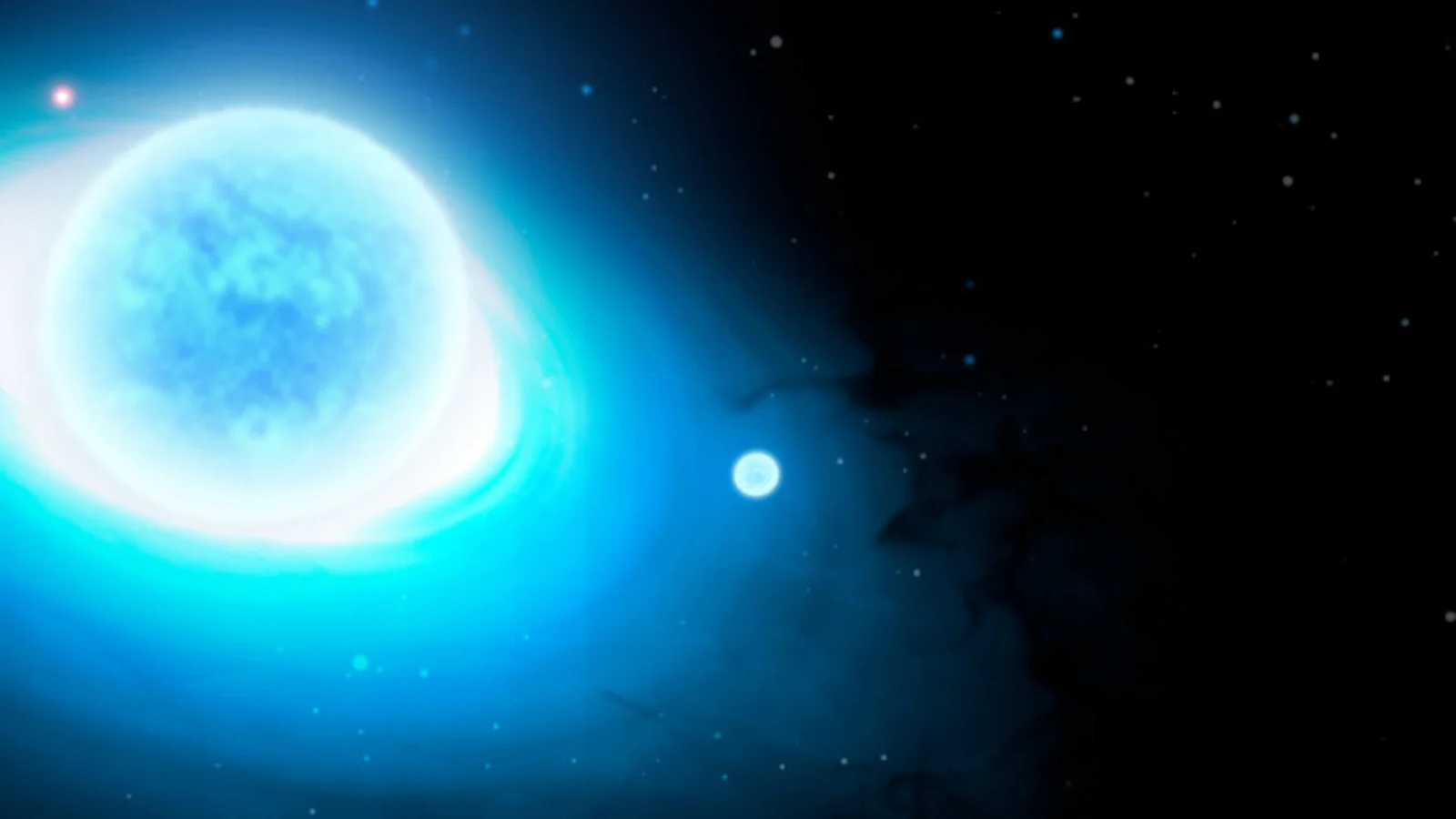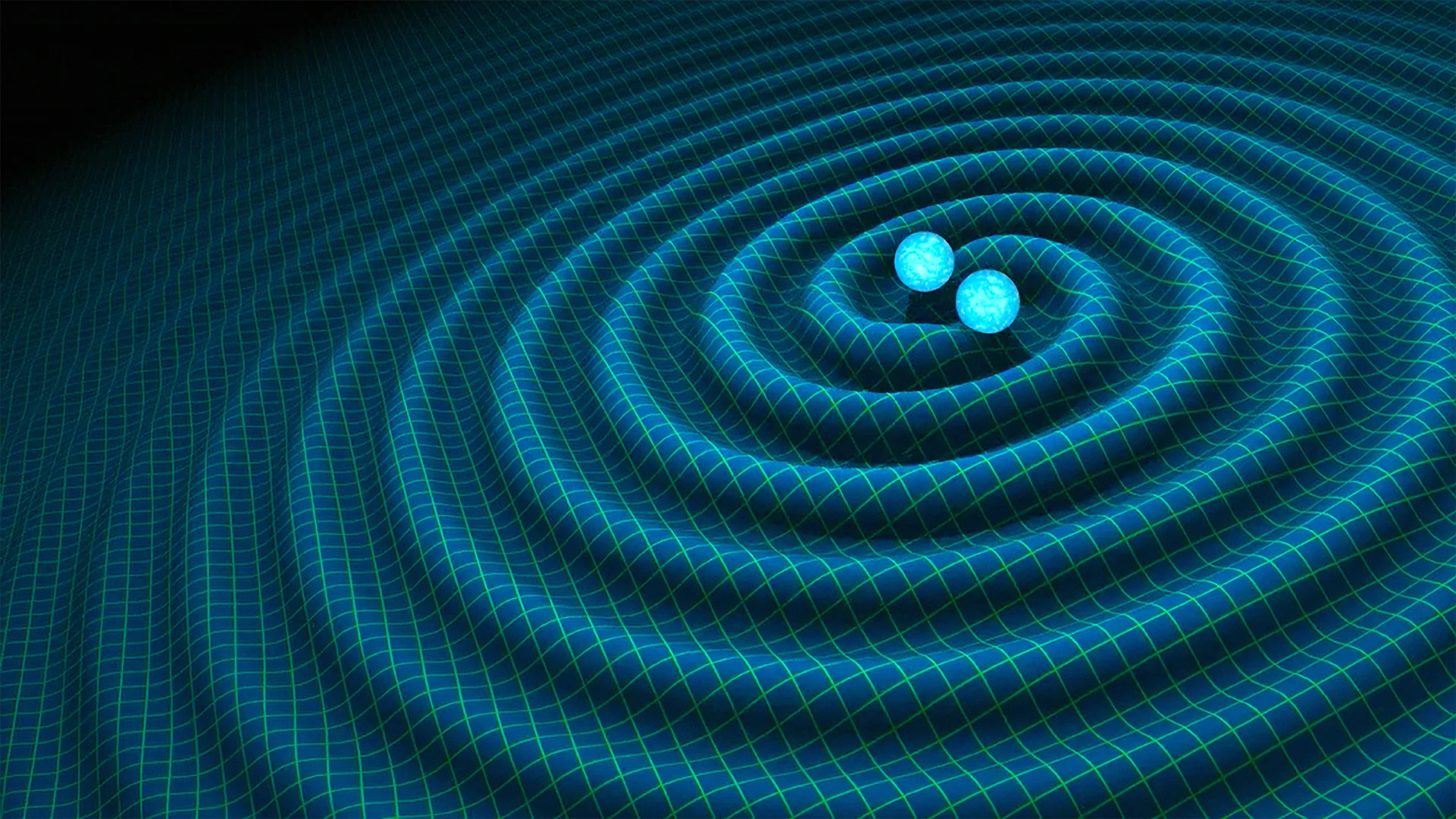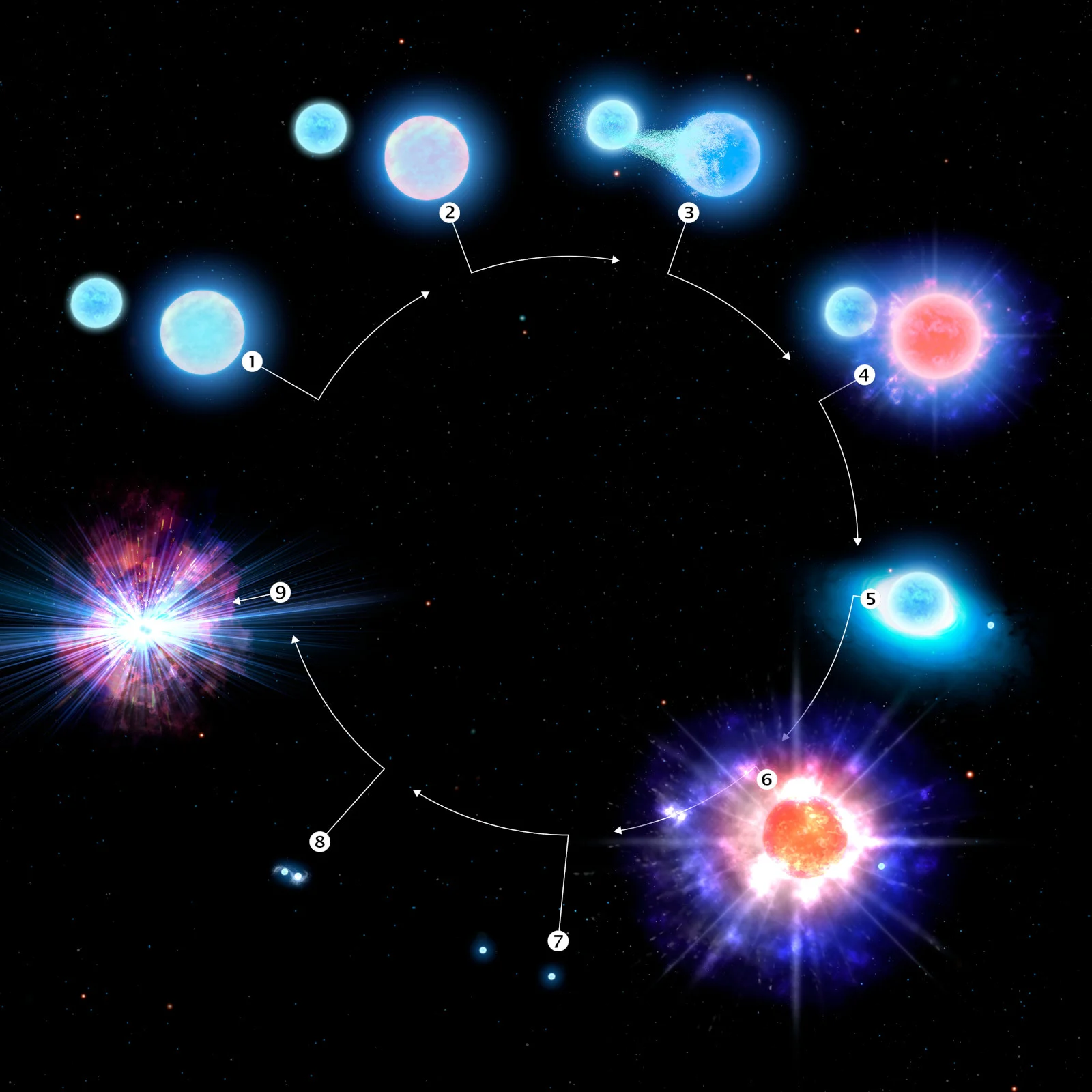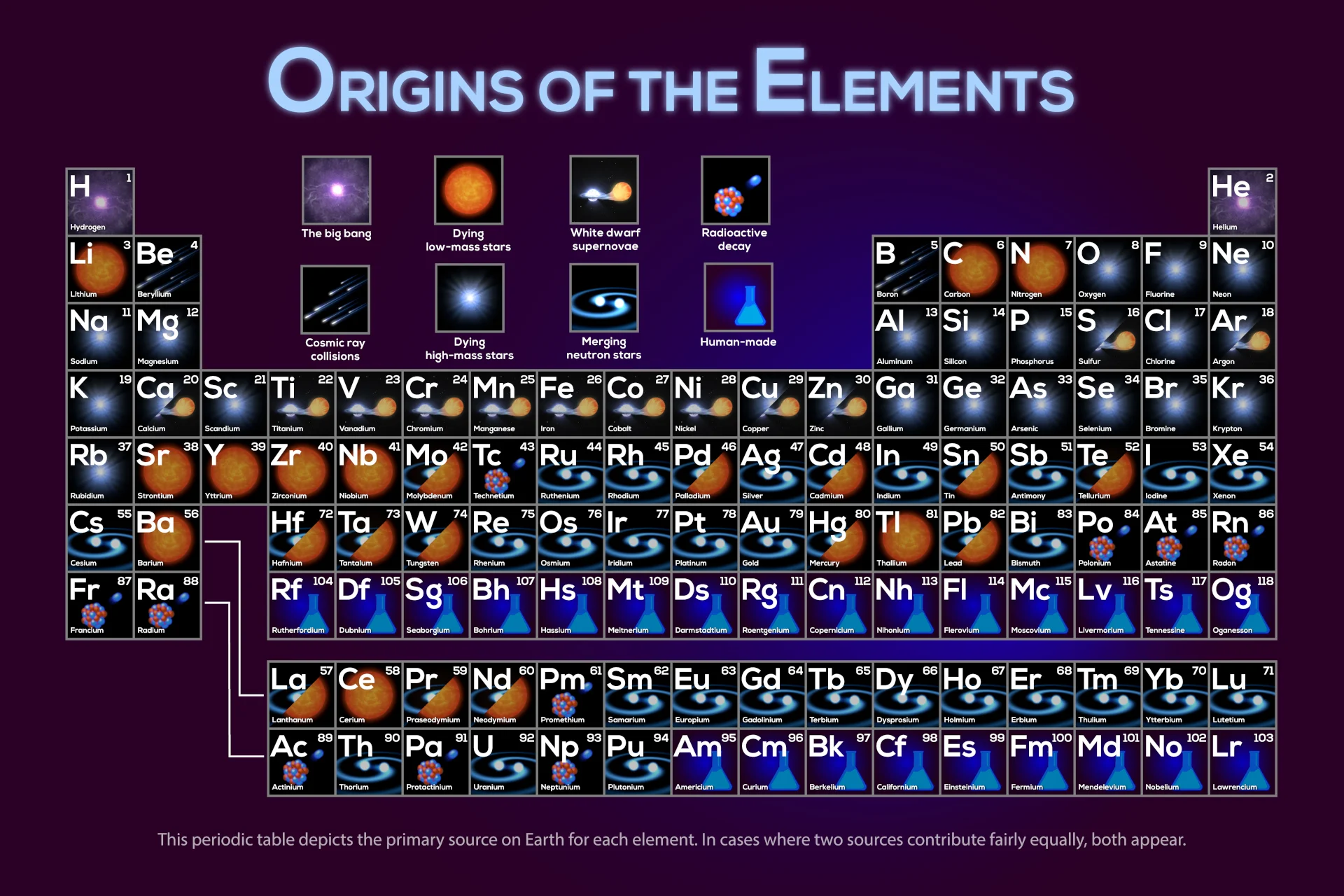
This super-rare binary star will one day explode in a gold-producing kilonova
There may only be 10 of these ultra-rare systems in the entire Milky Way Galaxy.
Astronomers just made what may be one of the rarest finds in our Milky Way Galaxy — a pair of stars that will one day crash into one another and explode in a gold-producing kilonova.
When a massive supergiant star dies, it explodes, blasting its outer layers into space and crushing its core down to an ultra-dense object known as a neutron star. Some rare star systems in the cosmos contain more than one of these supergiants orbiting close together. When both stars have died, the pair of neutron stars left behind pull each other closer over time until they eventually merge.

This artist's conception drawing shows two neutron stars spiralling in towards each other, producing gravitational waves in the process. Credit: R. Hurt (Caltech-IPAC)
The theoretical ideas behind neutron star mergers have been around for about 25 years now. In the years since research showed that the explosion resulting from such an event would be less bright than a supernova. However, it would be roughly 1,000 times brighter than a 'classical' nova — the sudden brightening of a white dwarf star caused by material falling onto its surface from a larger companion star.
Thus, this mid-range stellar explosion was dubbed a 'kilonova'. However, when the name was coined in 2010, astronomers had yet to see one.
It was in August 2017 that the first kilonova was spotted. In one moment, the light, high-energy particles, and gravitational waves resulting from a neutron star merger in another galaxy 130 million light years away confirmed decades of theoretical work.
Even with the excitement of that discovery, one thing remained unresolved. Finding one of these neutron star pairs before they collided would allow astronomers to answer specific questions about how a kilonova happens.
Roughly 11,400 light years away — right here in our Milky Way Galaxy — is a star system named CPD-29 2176, which is comprised of a massive star orbited closely by a neutron star companion.

This artist's impression depicts the first confirmed star system that will one day form a kilonova — the ultra-powerful, gold-producing explosion created by merging neutron stars. Credit: CTIO/NOIRLab/NSF/AURA/J. da Silva/Spaceengine/M. Zamani
When CPD-29 2176 was first examined by Noel Richardson, the lead author of the new study from Embry-Riddle Aeronautical University, and his undergraduate student (and now co-author) Clarissa Pavao, it was thought to be just one oddly-behaving star.
However, according to an Embry-Riddle press release, Pavao's careful analysis of the data from the system turned up evidence that it was actually two stars, in a strangely close circular orbit around each other.
It's clear from the presence of the neutron star that one of the pair already went supernova at some point in the past. Supernovae are cataclysmic explosions so powerful they can eject a close companion star from the system, or at the very least, push it into a wide elliptical orbit. Thus, it would take a special kind of supernova to produce a neutron star and preserve the close circular orbit of the system.
"An ultra-stripped supernova is the best explanation for why these companion stars are in such a tight orbit," Richardson said in a NOIRLab press release on Wednesday.
According to NOIRLab, an 'ultra-stripped' supernova is one where the dying supermassive star has had most of its outer layers stripped away by a companion star. Thus, when the star dies, the supernova it produces lacks the force to eject that companion from the system.
"To one day create a kilonova, the other star would also need to explode as an ultra-stripped supernova so the two neutron stars could eventually collide and merge," Richardson explained.

This infographic shows the process wherein a pair of massive B-type stars (1), as the larger of the two approaches the end of its lifespan (2), the smaller draws material from the larger (3), resulting in the larger having a stripped-down supernova (4), which maintains the original close configuration of the system (5). When the second star reaches its end of life, it will also be stripped of its mass, resulting in a less powerful supernova (6), leaving behind two close-orbiting neutron stars (7). These neutron stars eventually spiral inward (8) and merge to produce a kilonova (9). Credit: CTIO/NOIRLab/NSF/AURA/P. Marenfeld
"Basically, we found out how the ultra-stripped supernova interacts with the Be star and how it goes through these weird life-cycle phases," Pavao said. "At some point in the future, that Be star will also be a supernova neutron star as the cycle continues. It will become a binary system with two neutron stars millions of years from now."
With that, plus the time it takes for the neutron stars to spiral towards each other, there is a very long wait ahead for the resulting kilonova. Still, this is an extraordinary discovery, simply from the perspective of how rare this kind of binary star system is.
"We know that the Milky Way contains at least 100 billion stars and likely hundreds of billions more. This remarkable binary system is essentially a one-in-ten-billion system," said André-Nicolas Chené, a co-author of the study at NOIRLab.
Gold-producers?
Kilonovae are especially interesting to astronomers because they explain the origin of several of the elements on the Periodic Table.

This periodic table shows the origins of the elements, with over three dozen of them resulting from merging neutron stars, including gold, silver, platinum, bismuth, cesium, thorium, uranium, and plutonium. Credit: NASA's Goddard Space Flight Center
"Systems like this are likely to evolve into binary neutron stars, which eventually merge and form heavy elements that get hurled into the universe," Richardson said in the Embry-Riddle press release. "Those heavy elements allow us to live the way that we do. For example, most gold was created by stars similar to the supernova relic or neutron star in the binary system that we studied."
Merging neutron stars are also the primary source of elements such as silver, platinum, cesium (crucial for atomic clocks), and thorium, uranium and plutonium (all important for nuclear power).
(Thumbnail image courtesy CTIO/NOIRLab/NSF/AURA/P. Marenfeld)











